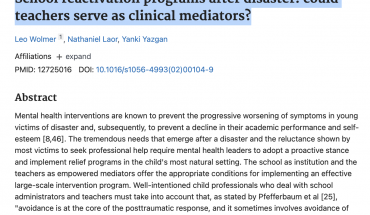A Direct Observational Measure of Whole Body Turning Bias
M. Yanki Yazgan, James F. Leckmanl and Bruce E. Wexler
The directional preference for spontaneous turning in humans has previously been documented using an electronic device (rotometer). We used a simple, inexpensive, and wellcontrolled test of turning behaviour in 41 adults with no psychiatric diagnoses. In this test, the direction in which subjects turned is recorded as they complete each one of what they think is a series of evaluations of gait, in a room symmetrically spacious and free of distracters. A substantial majority of our right-handed subjects (N = 27) showed a significant leftward turning bias, while non-right handed group (N = 14) did not show this bias. Test-retest reliability for this measure in 17 individuals tested twice at different times was high (rho=0.73).

